Food on the PCT: How and what I actually ate
I like eating, and I like food. When I’m in full foodie mode, planning, procuring, preparing, and eating food takes up most of my non-work hours, and it’s been that way for a decade.
Despite this lifelong food obsession, never before hiking 2660 miles in one season have I truly, fully, completely understood the role of food as fuel in my body.
Food on a thru-hike is not a hobby. It’s not trivial. And it’s not always easy. Food on the PCT was energy, pure & simple.
In this post, I’ll talk about not only what I ate on the trail, but also how and when I ate. I’ll talk about how I adapted my diet to my changing needs over the course of the hike, and how I let go of off-trail considerations to listen to my body.
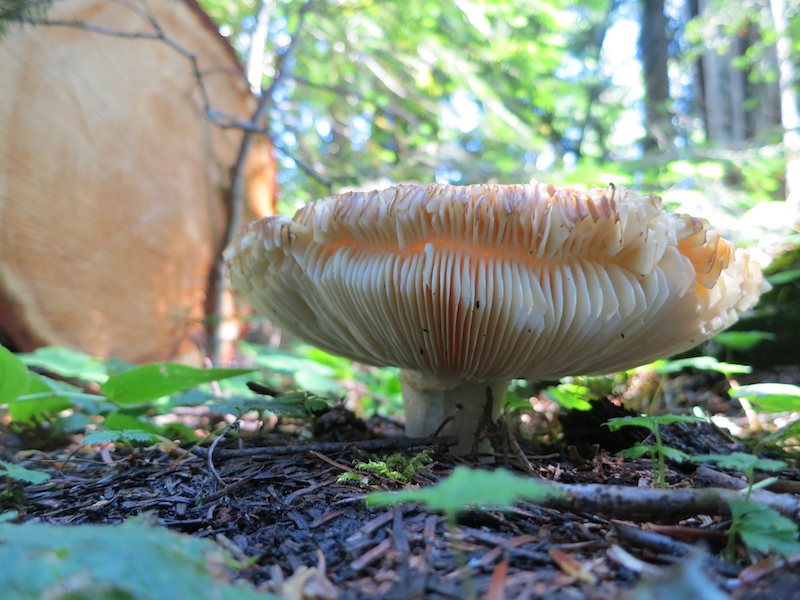
Things I didn’t eat: this old mushroom. My mycological skills are not good enough to ID anything but a chanterelle, and I wasn’t going to take chances on fungi.
Pre-trail preparations and changing preferences
As I described before my hike, I planned to eat food that was calorie dense and delicious. Before leaving for Campo, I bought a month’s worth of food and pre-packaged all the bulk snacks. By two weeks into the hike, I couldn’t stand most of what I’d mixed into those bags, and was very glad I hadn’t bought all 5 months in one go.
It was difficult to get all the calories down the first few days, as I’d expected. I managed by treating eating like a job, and forcing myself to chew mechanically even if I wasn’t interested.
It’s 10 am — eat your cheez-its! 2 pm already? Time to kill those macadamia nuts. It’s 7 pm and I still have to eat a Lärabar?
Bleh. (Shoves Lärabar in mouth.)
Because I had my partner at home mailing me boxes, it was straight-forward to call him from town and say “ditch the snack bags” and “no more dried fruit”. I continued adapting my boxes as I progressed through southern California, and by Oregon, I had my food dialed in.
While I am very glad I planned out the first month of food, I was even more glad that I hadn’t tried to plan the whole hike’s food. Not only did I figure out what food worked best for my thru-hiking style, but my preferences themselves changed as I hiked further.
From no-cook beans to hot chocolate and mac & cheese
The biggest food change I made on the hike was adding a stove at Agua Dulce. For the first 450 miles of the hike, my dinners were rehydrated bean soups with fritos, and I ate no hot anything.
I liked the bean soups (particularly the lentil soup), and didn’t mind eating cold food. What I found I did mind, was eating my cold plain food around other people. As long as I was alone when I ate, and not around other people when they ate a hot meal, I was totally fine with no-cook. I loved the convenience of not pulling out a stove, or having to worry about fuel, wind, or fires.
Unfortunately for my pack weight, I started to appreciate being around other hikers more and more in the mile 300s, and after too many nights staring at Lizard’s mac & cheese, or dreaming about hot chocolate before bed, I decided to add my stove at Agua Dulce instead of Kennedy Meadows.
By the time I got through the High Sierra, I was so used to my cooked dinner and hot chocolate routine that I didn’t even consider switching back to cook-less food.
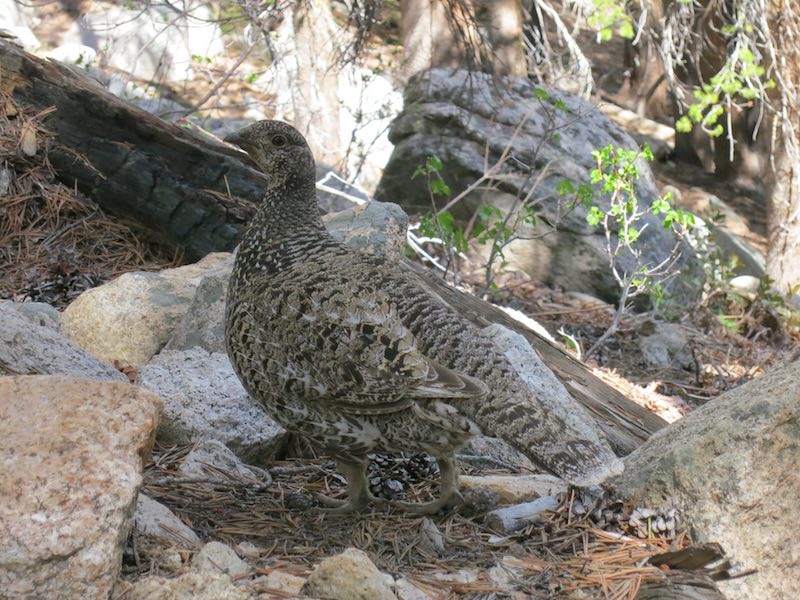
I didn’t eat this grouse either, even though it walked two feet in front of me, tempting me with its plump body and careless ways.
Eating every hour to manage Hiker Hunger
“An eating and drinking contest, with a little exercise and scenery thrown in.” – Sunny Blende
Isn’t that the perfect description of thru-hiking? Sunny Blende wrote it about ultrarunning, but it’s entirely applicable for walking for 5 months too.
I started out breaking every 2 hours or so — actually stopping and sitting. This gave me time to air out and rest my poor tortured feet, and I would cram a few bars or handfuls of chips in my mouth while I sat. Over time, my breaks decreased, until in early Oregon I was only stopping twice a day for 30-45 minutes at a time.
To get enough calories, I ate while walking, with my trekking poles tucked under my left arm. I designated the left-hand pouch on my hipbelt as my snack pocket, and jammed it full of all my bars and nut butter for the day.
Real hiker hunger took time to get going, and once it arrived, had its peaks and valleys. The hunger was the highest in the High Sierra and Washington, when I felt like I could never get enough food, and came into town wanting to gnaw my own hand off. In most of Oregon, I would walk into town with a handful of bars left, so was carrying too much food.
When I learned to walk a 30 mile day in Southern Oregon, one of the tips I got, from Hot Tang, was to eat every hour, instead of every 2 hours. I adopted that practice and continued it all the way to Canada, regardless of my daily mileage.
When I was rehydrating my bean soups, I would do so at a break around 4:30 pm, then eat it around 5:30 – 6 pm. Once I switched to cooking, I mostly ate at camp, though preferred the nights when I forced myself to stop and cook before making camp.
Sample Day of Food
The chart below shows an example of a whole day’s food in Washington. At 4830 calories, this was probably the most I ever ate in one day. It was also definitely not enough for some of the North Cascades days.
| Sample Day of Penguin food on the PCT | |||
|---|---|---|---|
| Time | Food | Calories | |
| Start hiking | 1 iced coffee packet | 80 | |
| Start hiking | 2 Nature’s Path pop tarts | 420 | |
| Before AM break | 1L Gatorade | 225 | |
| 1 hr later | 1 Clif Bar | 240 | |
| 1 hr later | 1 KIND bar | 190 | |
| AM break | 2 tortillas | 200 | |
| AM break | 1 packet tuna in oil | 190 | |
| AM break | 1/2 avocado | 120 | |
| AM break | peach | 60 | |
| 1 hr later | 1 Lärabar | 220 | |
| 1 hr later | 1 almond Snickers | 230 | |
| 1 hr later | 1 granola bar | 90 | |
| PM break | 1 packet Ramen noodle soup | 380 | |
| PM break | 1 bag Dorito chips | 240 | |
| PM break | 1 oz beef jerky | 80 | |
| 1 hr later | handful black licorice | 160 | |
| 1 hr later | 1 Justin’s almond butter packet | 190 | |
| 1 hr later | 2 Stretch Island fruit leathers | 90 | |
| At camp | 1 box Annie’s Mac & Cheese | 675 | |
| At camp | 2 oz summer sausage | 170 | |
| At camp | 2 oz Tillamook sharp white cheddar | 220 | |
| At camp | 1 hot chocolate packet | 110 | |
| At camp | 1/4 chocolate bar | 250 | |
| Total | ALL THE FOOD. MOAR PLEASE. | 4830 | |
The intersection of comfort, fuel, & variety
Once I was switching up food on the trail, I sometimes did a calories/ounce calculation, but not always. This meant that some of my foods, particularly dinners and the fruit leather, were below my 100 cal/ounce standard. I found them still worthwhile to bring, but do look forward to bringing my food weight down by being a bit more careful about density.
With that caveat, here is basic selection of food I settled into on the trail:
Breakfasts: PROBARs (got real sick of these by Ashland), Nature’s Path Toaster Pastries (Pop Tarts — superior to Kelloggs), brownies (good when not crumbly)
Bars: ClifBars, Lärabars, KIND bars, granola bars (low cal), Snickers (particularly Almond), Almond Joy
Misc: black licorice, Reese’s Pieces, peanut M&Ms, Doritos or other corn chips, potato chips, Fritos
Fruit & nuts: fruit leather, chocolate-covered macadamia nuts, peaches, plums,
Lunch: bread (tortillas, bagels, pita pockets) w/ meat (tuna in oil, lemon pepper flavor, sun-dried tomato flavor, jalepeño flavor, or salami slices) & cheese (cream cheese, brie, cheddar, monterey jack) & avocado; ramen noodles
Dinner: Annie’s Mac & Cheese, Knorr Rice Sides (chicken flavor), or Pasta Sides (Alfredo) with summer sausage & cheese (and butter in the Sierra); Mountain House (beef stroganoff, beef stew, chicken teriyaki); bean soup (black bean, split pea, chili) w/ olive oil & fritos
Drinks: Starbucks VIA coffee packets (2 at a time), Starbucks VIA Iced Coffee or Refreshers Very Berry Hibiscus packets (1 at a time), Gatorade powder (Lemon-lime flavor), hot chocolate, hot apple cider
Foods I tried and hated: Odwalla bars (gross, farty), fruit snacks (low cal, too low enjoyment), CHOCOLATE (for real — I could rarely get myself to eat my chocolate bars, even when starving)
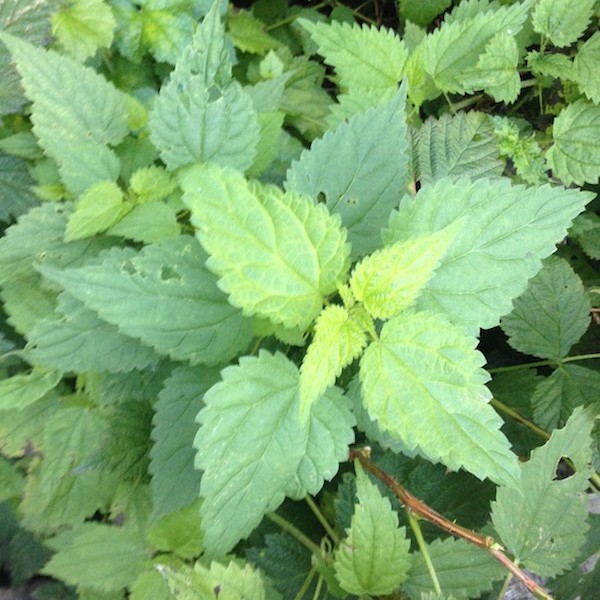
I didn’t even eat these edible stinging nettles. Just looked at them long enough to think “huh, if I cared, I could eat those”, and walked on.
A note on beverages
Pre-hike, I didn’t think too much about what I would drink on the trail, other than plain water. I don’t mind the taste of chemicals in my water, so I hadn’t planned to cover the taste of my treatment. I had even weaned myself out of my 12-18 oz daily coffee habit before departing.
My hike improved noticeably when I started adding in beverages. The gatorade came pretty quickly — I saw other people drinking it and craved it. I added Nuun to the mix at Agua Dulce when I picked some up at REI for Chimp. I drank one tab of that daily until I got suddenly sick of it in Oregon.
Sometime around then I added in cold coffee — I would add 2 packets to a half-full water bottle, shake it up, and drink it while I ate my breakfast pop tarts. After I was done with the coffee, I’d make a full bottle of gatorade and sip that during the morning.
I usually made my hot chocolate (or hot apple cider) at camp, but sometimes I would mix it into cold water in one of my water bottles during the last part of the day and have it as a chocolate shake. I recommend two hot chocolates per day, for maximal deliciousness.
One thing I always did around beverages was make sure I always had plain water for cleaning my hands or washing out cuts. This meant that sometimes I wouldn’t make coffee until mid morning, or I’d delay Gatorade ’til the afternoon. I was glad for this practice when I gashed my thumb near Donahue Pass and had plenty of water to clean out the 3/4″ cut.
Reflections on food choices
Some of my favorite days on the trail were ones when I made dinner early and walked on into the dusk, then had a super simple camp setup. I loved the light at that time of day, and it was nice to get a larger meal before 8 or 9 pm. On further backpacking trips or long hikes, I plan to try this out more and see if I can get it a comfortable part of my routine.
The main reason I didn’t stop early to cook every night was because the people I was hiking with (in Oregon, at least) preferred to cook at camp, and I found it easiest for motivation and companionship to follow their schedule.
Whether or not I do an early dinner and hike more, or do no-cook will depend a lot on who I hike with in the future. It would be fun to find hiking partners whose eating styles matched — this wasn’t something I realized to consider on the PCT.
I would definitely do the snacks-in-the-hipbelt, eat-every-hour hiking method in the future. Heck, I do it on 3 mile day hikes now. It keeps me well fueled, and counteracts the food anxiety. It also allows me to get enough calories during the day that I don’t have to eat more than 600-1000 at one sitting.
One thing I would try next time is eat something right before sleeping. I ate before getting in my tent, but then I would lie there reading and writing in my journal, sometimes for an hour or more. I suspect I would be warmer throughout the night with a snack after book time.
I had made a promise to myself before the trail that I would always have time to stop and take a picture, and when I got into huckleberry territory, I made a similar promise: I would always have time to pick and eat berries. Sometimes that slowed down my mileage a bit (okay, A LOT), but those huckleberry miles were well worth it.
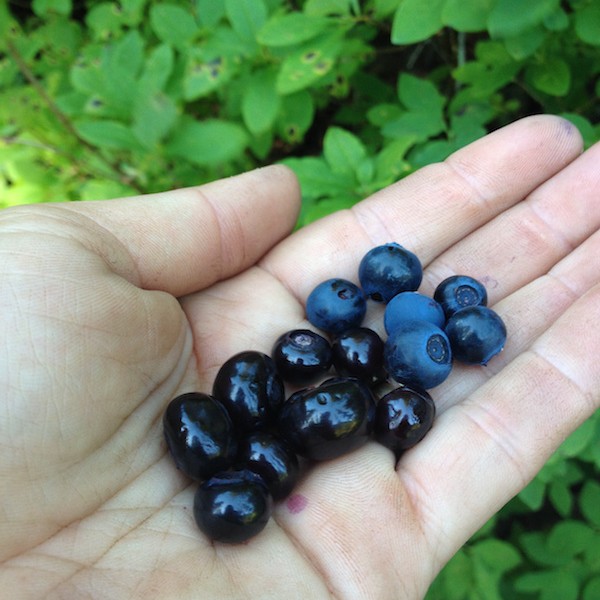
Finally, something I did eat! Huckleberries & the less common blueberries stained my mouth and hands red for miles of OR & WA.
Letting go on the trail
At home, I don’t eat at MacDonalds, I avoid hot dogs and other super processed foods, and I never eat candy bars. I try to know where my meat was raised, and minimize the number of pesticides on my veggies. Picture the Portlandia eco-foodie stereotype and that’s about right.
I let go of my food ethics when I started my hike. Well, maybe not right when I started… but I left them behind pretty quickly on the trail.
With every day being another relentless push northward, slowly breaking down my body and will, I just couldn’t care about the same things I cared about when I lived in a city, slept in a warm bed, and wasn’t in motion 10-12 hours a day.
I still bought the foods I preferred when I had a choice, but when I didn’t, I let myself eat whatever was there. Early on, I had some struggles in the grocery store, and realized that trying to stick to particular food-sourcing was going to be a big mental drain, and I just didn’t have the bandwidth to do it.
I couldn’t walk from Mexico to Canada AND care where my calories came from, be it junk food or questionable hamburgers in town. I met plenty of people who did care, and I salute their mental fortitude, and am glad I knew myself enough to make the right choice for me.
—-
So there you have it, the identity of the half million calories I ate on the Pacific Crest Trail. If there’s anything I left out or you have a question, please leave a comment below.
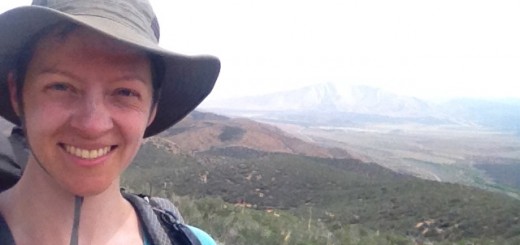
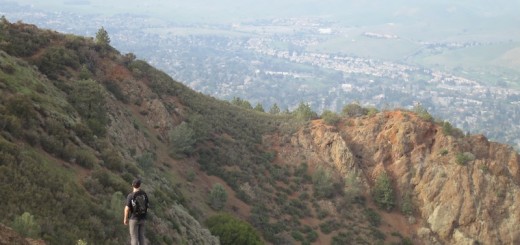
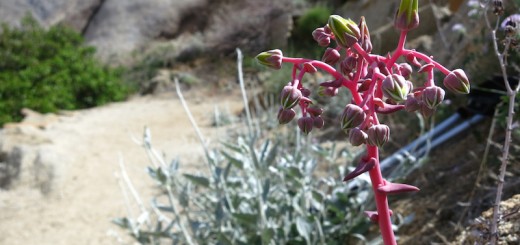


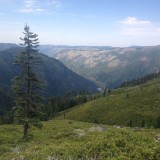


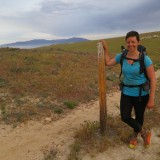

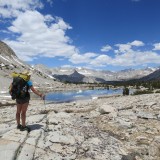
Thank you for such a comprehensive summary! It helps me put my food choices in perspective as I plan to hike the PCT this year (2015). I especially enjoyed your comments regarding the social aspects and how it affected your cooking & food choices. One question, have you put together your thoughts regarding blogging during your trip? I know from experience that it is difficult at the end of a long day to lay in a comfy sleeping bag and put together a blog.
Thanks, Bob. I haven’t done a write-up of my blogging yet, but I like the idea. The short version is:
I wrote in a paper journal (for myself) every night, and I’m glad I did. I lost steam on blogging (for others) from town, but would like to try again (maybe shorter posts, nightly or at least more frequent) on a future hike.
Thank you Alice for sharing this. It definitely helped me as I plan for my hike in April. I especially liked your section on letting go on the trail. Your description of foods also gave me great ideas in food planning. This was all very nice of you to help the rest of us as we plan. I sincerely appreciate all of your advice and inspiration. Thank you!
Yes, this is a very helpful post! I’m not a foodie and planning food stuff at home makes me want to run screaming from the room, so planning for food on the trail seems like one of the most intimidating aspects of a thru-hike to me. Your descriptions and advice make planning for the trail sound doable. Thanks!
Thanks!
Hello again Alice! Great post. I definitely struggle with the food ethics thing a lot on the trail. I was raised by hippies and have a hard time wrapping my brain around the idea of eating things like Doritos etc (I just think, “Holy crap, do you KNOW what kind of preservatives are in this??). But, you make an excellent point about sometimes just needing to let it go. As you mentioned, I’m sure there are lots of great folks out there who eat their organic pre-selected food the entire time, but sometimes I feel like it gets mentally draining to so specific with your food all the time (I sort of experience this is everyday life too). Thanks for all the great info!
I browsed through the article quickly noting the pics assuming you scavenged wild fungi, grouse, nettles and huckleberries the whole way.
As a LD hiker you are well aware that adaptability and flexibility serves you well. However, with 20+ LD hikes of 600 miles or more in the U.S., three of more than 3500 miles, and being conscientious of eating and drinking habits, I’m strongly of the opinion you don’t need to ignore your food ethics as a hiker.
I’m a Foodie, pesce vegetarian for 20 yrs,(mostly), and seek out Organic on and off trail. I might slide a bit and eat something fried like fries or chicken or take in a milk shake later into a very long distance hike on trail but it’s not really that mind blowing daunting to eat well on the trail if you mail a few boxes and aim to buy at larger grocery stores. Especially out west where consumers tend to more likely be Foodies or have a higher sensibility of where their food comes from and what’s in it than much of the east coast states’ population, west coast grocery stores are stocked well. Although, even on the more food lenient east coast we’re observing grocery stores such as Krogers, Walmarts( w/ markets), Publix, etc offering minimally processed minimally packaged fresher alternatives, even Organic selections. One has to look though and not give into the Pop Tarts, Snickers, greasy chips, Little Debbies, sugar, trans fats, preservatives, etc. If your typical resupply is bought at a gas station convenience store choices are more limited. Good luck with that.
Alice, you are so right about food habits that had once been unquestioned off trail becoming apparent once on a LD hike. LD hiking finally made those questionable habits surface to which I couldn’t ignore and continue anymore on trail. The taught regular habit of reaching for easy to obtain convenient seeming junk food like most chips, Pop Tarts, Snickers, sugary highly processed “nutritional” bars, Little Debbies, Moon Pies, etc gave way to higher fiber, slow burning complex carbs, low in added sugar, high in “good fats” whole foods. Dropped much of the added sugar from the hiking diet, ALL of the trans fats(BAD FATS, hydrogenated anything), and MSG(it interferes with the neurological messages that tell the brain were satiated ). Ate lots of fiber rich and slow burning complex carbs in their most natural whole food states with lots of “good fats”( the fats in nuts, seeds, EVOO, avocados, coconut products, oily fishes, etc) using the grazing or “drip method” which reduced hunger, decreased or eliminated energy spikes, and cravings. Drank copious amounts of water in reg sips consistently which not only aids in feeling full but basically keeps our organs, skin(It’s an organ), muscles well oiled, less prone to muscle fatigue, better recovery, etc. Resupplying more often or supplementing so to have more availability to in town food to keep up the caloric load helps. Lastly, consider growing nutrient rich living sprouts on trail. The fiber, moisture, and very good nutrition and ease of growing sprouts as one hikes can help keep the hunger at bay in a tasty way.
One of the greatest misconceptions of LD hikers is that energy, or more precisely optimal nutrition, is narrowly about consuming mass calories. Food, more precisely optimal nutrition, which is not all that complicated to get on trail especially on U.S. trails like the TC trails is more than calories. It is also about enzymes, phytonutrients, vitamins, etc usually lacking in junk food. Eating more and consistently more of these nutritionally dismal foods leads problems as one hikes ie: energy spikes, excess packaging to rid oneself of, excess bulk, excess food wt, etc.
Thank you Dogwood! this post is a much needed post of encouragement to maintain our diet on the trail! If you have any other tips or planning suggestions please share!
In short, rather than opt for those seemingly convenient junk foods – food like products – with empty calories, better to opt for overall nutritionally dense high cal/oz ratio real foods. In the long run they serve many a hiker the best in terms of performance, trail food wt, and even eventual cost.
Alice, thank you, thank you, thank you for this post. This and your pre-hike post have been, by far, the most comprehensive and helpful posts I’ve found on resupply strategy. Very timely as I’m currently in panic mode for how to approach shopping for and filling all of my resupply boxes for a 2016 thru-hike. This gives me a lot of new ideas for how to approach it!
As a newbie (capable, but yet completely untried) thru hiker with a JMT trip planned this Sept., I can’t thank you enough for not only your suggestions, but your post-trip feedback. My food anxiety is matched only by the realization that I’m going to be walking….a lot, everyday, for about a month. Your suggestions are tres helpful. thanks.
Just read this post through again, and I’m wondering if you’re ever going to put all your wonderful information in a book that I could carry with me places, and make notes in and turn down its corners and stuff! 😀
Thank you for the info, for your fun and easy-to-read writing style. Now I find myself pouring over your entire site! And bravo for the food / calorie breakdown and for laying out your routines.
Thanks Alice for the comprehensive food article. Did you have any challengers getting back into you nutritional eating once you were off Trail?
I will be hiking the PCT when I retire and have a question about the food. I would like to shed a few pounds and wondered if this will occur or not if I consume so many calories?
Did you lose any weight or were you at Ideal weight when you started?
Also how do you prevent weight gain after the hike?
Hey Alice,
I happened upon your site Alice Hikes (very cool!), and while clicking around your site I came across this post.
I am the editor of MyOpenCountry.com, and we have recently updated our pretty in-depth article on Thru-Hiking 101 and thought you might be interested. We’d be hugely honored if you would check it out (and possibly consider adding a link to it).
If not, we would always welcome any constructive criticism!
Here is the link: https://www.myopencountry.com/thru-hiking/
Happy Trails!
Karen